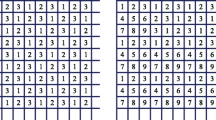Abstract
The polyphase-based mechanism is the basis of many multiple descriptions coding schemes. Its main drawback is the inefficient exploitation of the inserted redundancy, especially when the redundancy is large. In this paper we propose a novel approach that uses mid-tread quantizers with tunable deadzone, in order to efficiently exploit the inserted redundancy. In particular, the deadzone width is selected based on the statistical distribution of the data, and the approximated level of redundancy to be inserted. The proposed approach is tailored for those codecs that use mid-tread quantizers with tunable step-size and deadzone width. This is particularly interesting given that the majority of codecs use this topology of quantization, and they rarely allow changing it. Moreover, the proposed scheme can be extended to the case of more than two descriptions. Finally, it is worth reporting that the results of the proposed approach outperform that of state-of-the-art schemes. In fact with the same side performance, the central quality can achieve up to 1 dB gain.






Similar content being viewed by others
References
Baccaglini E, Tillo T, Olmo G (2007) A flexible R-D-based multiple description scheme for JPEG 2000. IEEE Signal Process Lett 14(3):197–200
Banister BA, Fischer TR (2001) Quadtree classification and tcq image coding. IEEE Trans Circuits Syst Video Technol 11(1):3–8
Goyal VK (2001) Multiple description coding: compression meets the network. IEEE Signal Process Mag 18(5):74–93
Jiang W, Ortega A (1999) Multiple description coding via polyphase transform and selective quantization. In: Proc. SPIE intl. conf. on visual comm. and image proc., pp 998–1008
Liu Y, Oraintara S (2007) Feature-oriented multiple description wavelet-based image coding. IEEE Trans Image Process 16(1):121–131
Neuhoff DL (1993) The other asymptotic theory of lossy source coding. In: In coding and quantization of DIMACS series in discrete mathematics and theoretical computer science, vol 14, pp 55–65
Raykar VC (2002) Probability density function estimation by different methods. ENEE 739Q SPRING 2002 course assignment 1 report, pp 1–8
Servetto SD, Ramchandran K, Vaishampayan VA, Nahrstedt K (2000) Multiple description wavelet based image coding. IEEE Trans Image Process 9(5):813–826
Tillo T, Gabriella O (2008) Improving the performance of multiple description coding based on scalar quantization. IEEE Signal Process Lett 15:329–332
Tillo T, Grangetto M, Olmo G (2007) Multiple description image coding based on Lagrangian rate allocation. IEEE Trans Image Process 16(3):673–683
Acknowledgements
This work was supported by 973 Program, under Grant 2011CB302204, the National Science Foundation of China for Distinguished Young Scholars, under Grant 61025013, Sino-Singapore JRP, under Grant 2010DFA11010, National Natural Science Foundation of China, under Grants 60776794, 60972085.
Author information
Authors and Affiliations
Corresponding author
Rights and permissions
About this article
Cite this article
Lin, C., Tillo, T., Xiao, J. et al. Optimizing the deadzone width to improve the polyphase-based multiple description coding. Multimed Tools Appl 68, 863–875 (2014). https://doi.org/10.1007/s11042-012-1093-1
Published:
Issue Date:
DOI: https://doi.org/10.1007/s11042-012-1093-1




